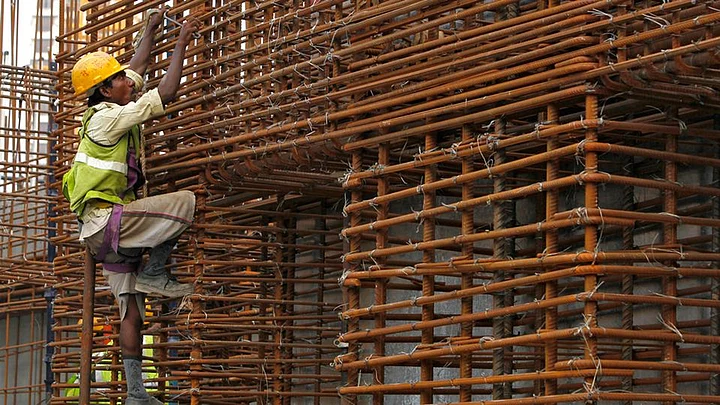Growth Pangs
- In January, India switched to a new method to calculate economic growth
- This included changing the base year and using market price instead of factor cost
- The base year was changed to March 2012 instead of March 2005
- Under the new method, the economy was projected to grow at 7.4% for the year, and not 5.5% that the RBI had projected
- While India beat China’s growth in Jan-Mar qtr, GDP growth in Apr-Jun qtr fell short of expectations
Early this year Indian statisticians played around with some numbers and changed the way they measure the country’s gross domestic product (GDP). By definition, it is the monetary value of goods produced and services provided per quarter. India became the fastest growing economy in the world (in the January-March quarter), even beating China to the game .
Only two quarters before that, India was labelled as an economy “struggling to gain momentum” entrusted with a new government promising reform and restructuring. All of a sudden, the Indian economy was projected to grow at the rate of 7.4% for the year, and not the 5.5% that the Reserve Bank of India (RBI) had projected under the old method of calculation.
‘Tweaking’ the Numbers
Economists did a double take. Suddenly, all their predictions, calculations, excel sheets, graphs, rehearsed sound-bites for TV, trade figures etc appeared erroneous. They had to re-calculate and alter their data which until then showed the economy was unstable and slow.
Statisticians termed this a “statistical recovery” saying they had aligned the calculation in line with how other countries do it.
This is what the statisticians did. They changed the base year to March 2012 instead of March 2005. They also changed the measure of economic growth to market prices, not factor costs. Meaning, earlier they used to measure money paid by consumers, now they measure economic activity based on production costs. So, the contribution from factories has increased. Do I really understand this? No. Hard for anyone to really nail down exactly what they did, but the World Bank seems to get it. Some media reports said the RBI governor, Raghuram Rajan, himself doesn’t understand the new calculations.
Short-lived Euphoria
On Monday, the Indian stock market opened with a bang. The country was expected to report GDP numbers which would show it continued to be the fastest growing economy for a second straight quarter. Even though market watchers have been doubtful about this new calculation, India’s GDP expectations boosted euphoria early morning at a time when China licked its wounds caused by an economic slowdown and the recent stock market rout.
Going back to investor reaction that we discussed in the last article on China, the positive sentiment didn’t last long on Monday as GDP numbers for the April-June quarter showed growth at 7%, below expectations of 7.4%. Sentiment was hit hard and Indian shares ended lower.
India’s GDP growth still matched China’s growth for the quarter, thanks to the tweaking of data calculations by statisticians, but Monday’s numbers also indicated that India needs a lot more than “statistical recovery”. All eyes are now on the central bank and what it can do to monitor growth by changing another… you guessed it …number!
TeeNomics is a column that demystifies economics for young adults. Kavita Chandran is a Reuters journalist. The views expressed here are her own.
(At The Quint, we question everything. Play an active role in shaping our journalism by becoming a member today.)
